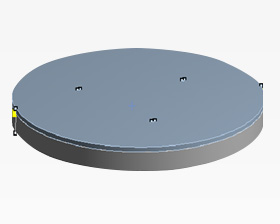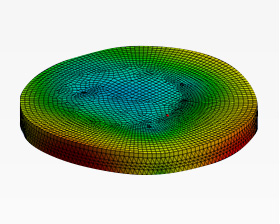Structural Analysis
Using a structural analysis software solves the complicated structural engineering problems to design structures more accurately and immediately. Our finite element analysis (FEA) tool customizes and automates the solutions for structural dynamic problems to parameterize them for analyzing multiple design scenarios. For more faithful analysis, this tool can be easily connected to other physics analysis tools.
Characteristics of Structural Analysis by us
- Interaction analysis by Computer Aided Engineering enables simultaneous analysis of complex phenomena.
- High Performance Computing allows analysis in a short time.
What is Finite Element Method?
Finite Element Method (FEM) is one of the numerical analysis methods for solving a differential equation approximately. In particular, since continuous problem analysis objects are modeled using analytical elements consisting of many small elements, this method has superior compatibility with complicated boundary conditions and diversified analysis objects. That is, in this method, an object with complicated shape and properties is divided into small parts to approximate them in order to forecast the overall behavior.
What is Interaction Analysis?
Computer Aided Engineering has a lot of separate functions of structural, fluid, thermal, magnetic field, and vibration analyses. A phenomenon is not a single event but occurs when multiple events, such as structure, fluid, and heat, influence each other simultaneously. In interaction analysis, such combined events are analyzed together.
What is High Performance Computing?
Since it takes too much time to perform complicated structural simulation, analyses are not necessarily completed faster even if the processing speed of CPU is improved. Turning CPU computing cores into calculation enables to achieve a speed more than ten times faster than FEA (Finite Element Analysis) simulation.
Simulation example
A heat transfer analysis on the deformation of components exposed to high temperatures, such as during the joining process, is conducted based on the structural analysis. A simulation enables to optimize the process design where the deformation is reduced.

Pre-structure analysis model

After structural analysis and heat transfer analysis